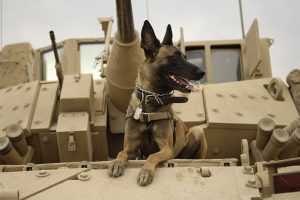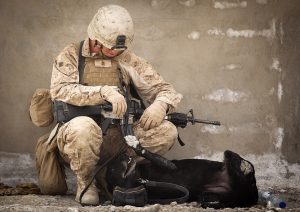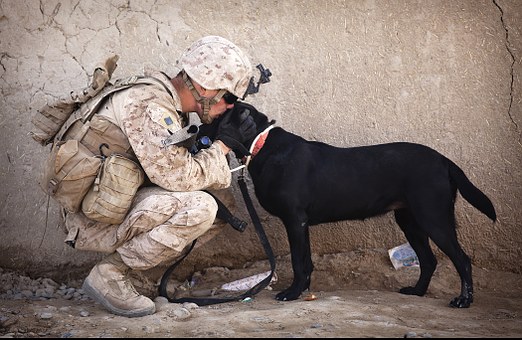De Faakto Intelligence Research Observatory
K9 Opioid Exposure/Overdose

Methodology
OSINT-research
Situation
K9 Opioid Exposure/Overdose
Background
Working dogs are K9s that perform various law enforcement and emergency service functions. Working K9 roles include tracking, narcotic seizure, search and rescue, security patrol or other appropriate functions. Dogs are curious by nature and use their noses extensively while executing duties. Law enforcement K9s are particularly vulnerable to accidental illicit drug overdose through inhalation, ingestion or absorption. Opioids like Morphine, Heroin, Fentanyl and Carfentanil are a serious threat for K9s executing narcotics search operations. Unfortunately there have been several police working dogs killed by opioid overdoses since the emergence of Carfentanil.
FAAKT BOARD-OPIUM Market
In the 2008 the United Nations Office on Drugs & Crime report,
• Estimates the annual market value of Opium 33 Billion dollars
• Global heroin seizures-73.3 Metric tons
• Annual flow of the global heroin market is 450 tons
• Opium production from Myanmar and Lao Peoples Republic is 50 tons
• Afghanistan produces 380 tons of heroin & morphine of which 375 tons are exported world wide
(UNODC, 2018)
• Intelligence on Carfentanil is limited
• Canadian authorities seized 42 Kg of Carfentanil in 2017; the seizure could have yielded nearly 420,000 doses for the street with a value of 13 million dollars (The Guardian, 2107)
Assessment
Documented Opium use by human’s dates back to 400 BC. Opiates are an addictive narcotic, with extraordinary levels of dependency. Because of the addictive nature of opium the supply of opioids will remain in direct correlation to the demand by those addicted. As the opium market remains strong, so will the risk of K9 exposure-overdose during narcotic searches. Most concerning is exposure to the ultra potent narcotic Carfentanil. Carfentanil is 10, 000 times more potent then morphine, an amount the size of a grain of sand can kill a person.
Recommendations
• Do not allow the dog to search for drugs in environments where the drugs are in loose forms
• K9 Handler First aid training for overdose recognition and treatment
• K9 teams should carry naloxone (narcan) antidotes for exposure & consider special canine-fitted oxygen mask and bag for K9 respiratory depression
• K9 Handler & first responder-Paramedic training for management of disoriented dogs that could attack when emerging from an opioid coma post naloxone administration
• Veterinarians with established veterinary-patient-client relationships with working dogs and their handlers may choose to issue each individual patient a prescription for the intra-nasal or intra-muscular formulation of naloxone for use in an emergency (University of Illinois, 2017)
• Paramedics embedded with tactical teams-should have emergency K9 medic training

Safety & Actions
Training Video on Reversing Opioid Overdose in Dogs – Illinois Vet Med
• ASPCA Animal Poison Control Center Phone Number: (888) 426-4435
• The ASPCA Animal Poison Control Center (APCC) is your best resource for any animal poison-related emergency, 24 hours a day, 365 days a year
Signs & Symptoms K9 Opioid Overdose
• Drowsiness
• Difficulty standing
• Failure to respond to commands
• Blank stare
• Weakness, progressing to unconsciousness
• Inability to breathe and ultimately death
Actions
• Working dogs should be monitored after a search for signs and symptoms of overdose
• Clinical signs of exposure vary; absorption could take from a few minutes to 15-20 minutes
• If exhibiting signs and symptoms seek veterinary care immediately
Emergency Field Treatment
• Naloxone [narcan] administration 0.04 -0.1 mg/kg IV/IO/IM/IT; repeat as necessary 1.0 – 2.5 mg
• Naloxone [narcan] is an opioid antagonist that reverses the effects of opioid receptors
• Naloxone is available in both an injectable form as well as the intranasal form
• The fastest way to get naloxone into a working canine in the field may be through the intranasal route
• Naloxone is safe and efficacious in dogs when given intravenously or intramuscularly
• Using Naloxone intranasal is likely better than doing nothing
From expert in veterinary anaesthesia, Dr. James S. Gaynor, DVM, MS analgesia, and pain management
• The normal starting dose of naloxone for opioid reversal starts at 0.04 mg/kg IV / intranasal and is reduced as needed. If we consider that most of our law enforcement dogs are 40 kg or less, we can do the same thing for them. (NOTE: 1 spray delivered by IN administration delivers 4 mg of naloxone HCl. Dosage recommendation of 0.04 mg/kg for a 40 kg canine = 1.6 mg.) I would give a dog half to whole dose of the intranasal formulation
Emergency Veterinarian Treatment
• A dog that has been exposed to ultra-potent narcotics, may require intravenous or intra-muscular administration of naloxone
• The illegal drug may have a longer duration of action compared to naloxone, exposed canines may experience a phenomenon called “renarcotization” – when the naloxone wears off, but the ultra-potent opioid is still in the dog’s body
• Serial doses of naloxone may be needed to maintain consciousness and spontaneous ventilation or breathing
• When renarcotization happens, clinical signs of opioid overdose will re-develop and another dose of naloxone is required
• Other opioid antagonists, including longer-lasting Naltrexone another opioid antagonist are available but most often used in zoos
• Naltrexone, for example, is approved for administration to elk and moose as an antagonist to carfentanil citrate immobilization (AVMA, 2018)
• Dogs that developed clinical signs of opioid exposure and were treated with naloxone should be closely monitored for at least 6-12 hours after exposure

Disclaimer-De Faakto Intelligence Research is provided to first responders for situational awareness, advice, guidance and educational purposes. Intelligence is perishable and fluid. Intelligence is updated and reassessed as new information becomes available. Sources are evidence based and multiple sources are used when possible. Sometimes intelligence assessments present gaps in information, this is a reality in intelligence led operations and gaps are filled when information presents. Emergency first responders should always follow best industry practices, organizational policy-procedures and regulatory standards.
Resources
Carfentanil causing huge spike in deaths: FHA-Surrey Now-Leader (2016) https://www.surreynowleader.com/news/carfentanil-causing-huge-spike-in-deaths-fha/
Drug Trafficking-United Nations Office on Drugs & Crime 2018) https://www.unodc.org/unodc/en/drug-trafficking/index.html
Dose as small as a grain of sand can kill you’: alarm after Canada carfentanil bust-The Guardian (2017) https://www.theguardian.com/world/2017/nov/12/carfentanil-bust-canada-fentanyl-opioid-crisis-dangers
OVERDOSE IN WORKING DOGS: FULL VIDEO SCRIPT-Vet Med- University of Illinois (2017) https://vetmed.illinois.edu/overdose-working-dogs-script/
Training Video on Reversing Opioid Overdose in Dogs – Illinois Vet Med (2017) https://www.youtube.com/watch?v=Al108zZF6nc&feature=youtu.be
Synthetic opioids put police dogs at risk-JAVMA (2018) https://www.avma.org/News/JAVMANews/Pages/180201a.aspx
How police are protecting drug sniffing dogs from an overdose-Boston.com (2017) https://www.boston.com/news/local-news/2017/06/01/hocew-police-are-protecting-drug-sniffing-dogs-from-an-overdose
Narcan Infographic Updated-Working Dog HQ (2018) https://workingdoghq.com/narcan-infographic-updated/
K9s and Narcan-Forensic Veterinary (2017) http://www.vetinvestigator.com/news-bedford/k9sandnarcan






